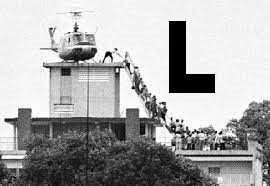Image of destruction in Mandalay, Myanmar, from Al Jazeera.
As if the ongoing civil war wasn’t enough, Myanmar has now been struck by a very powerful earthquake, resulting in 2000 deaths and thousands more injured as of the time of writing. Estimates are that the death toll could reach 10,000. Infrastructure like roads and bridges are damaged, and the hospitals are overwhelmed. The earthquake struck during Eid prayers, resulting in even higher casualties as several mosques collapsed. 20 million people already required humanitarian assistance in Myanmar, and now the situation there will be even worse. International rescue teams have rushed into the country, and aid is being raised, though with USAID experiencing the… changes that it is, the United States will be of even more limited help than usual. So far, China has sent $14 million, while USAID has supplied $2 million. In Thailand, the death toll seems considerably lower, though there has still been significant damage; a skyscraper under construction collapsed in Bangkok.
Myanmar is located very close to the boundary between the Eurasian and Indian tectonic plates. In particular, the country is divided in two by the north-south oriented Sagaing fault. This fault is typically strike-slip; that is, each side of the fault moves horizontally past each other. The earthquake’s depth was 10 kilometers, which is pretty shallow, and its proximity to the surface amplified the felt force of the earthquake. Additionally, the soft soil in this region tends to further amplify seismic waves through a process called liquefaction. Combine all this with the lackluster building codes due to many years of impoverishment and civil wars, and this explains why the death toll, and the expense to the country in general to repair damage, will probably be extremely high.
Last week’s thread is here.
The Imperialism Reading Group is here.
Please check out the RedAtlas!
The bulletins site is here. Currently not used.
The RSS feed is here. Also currently not used.
Israel-Palestine Conflict
Sources on the fighting in Palestine against Israel. In general, CW for footage of battles, explosions, dead people, and so on:
UNRWA reports on Israel’s destruction and siege of Gaza and the West Bank.
English-language Palestinian Marxist-Leninist twitter account. Alt here.
English-language twitter account that collates news.
Arab-language twitter account with videos and images of fighting.
English-language (with some Arab retweets) Twitter account based in Lebanon. - Telegram is @IbnRiad.
English-language Palestinian Twitter account which reports on news from the Resistance Axis. - Telegram is @EyesOnSouth.
English-language Twitter account in the same group as the previous two. - Telegram here.
English-language PalestineResist telegram channel.
More telegram channels here for those interested.
Russia-Ukraine Conflict
Examples of Ukrainian Nazis and fascists
Examples of racism/euro-centrism during the Russia-Ukraine conflict
Sources:
Defense Politics Asia’s youtube channel and their map. Their youtube channel has substantially diminished in quality but the map is still useful.
Moon of Alabama, which tends to have interesting analysis. Avoid the comment section.
Understanding War and the Saker: reactionary sources that have occasional insights on the war.
Alexander Mercouris, who does daily videos on the conflict. While he is a reactionary and surrounds himself with likeminded people, his daily update videos are relatively brainworm-free and good if you don’t want to follow Russian telegram channels to get news. He also co-hosts The Duran, which is more explicitly conservative, racist, sexist, transphobic, anti-communist, etc when guests are invited on, but is just about tolerable when it’s just the two of them if you want a little more analysis.
Simplicius, who publishes on Substack. Like others, his political analysis should be soundly ignored, but his knowledge of weaponry and military strategy is generally quite good.
On the ground: Patrick Lancaster, an independent and very good journalist reporting in the warzone on the separatists’ side.
Unedited videos of Russian/Ukrainian press conferences and speeches.
Pro-Russian Telegram Channels:
Again, CW for anti-LGBT and racist, sexist, etc speech, as well as combat footage.
https://t.me/aleksandr_skif ~ DPR’s former Defense Minister and Colonel in the DPR’s forces. Russian language.
https://t.me/Slavyangrad ~ A few different pro-Russian people gather frequent content for this channel (~100 posts per day), some socialist, but all socially reactionary. If you can only tolerate using one Russian telegram channel, I would recommend this one.
https://t.me/s/levigodman ~ Does daily update posts.
https://t.me/patricklancasternewstoday ~ Patrick Lancaster’s telegram channel.
https://t.me/gonzowarr ~ A big Russian commentator.
https://t.me/rybar ~ One of, if not the, biggest Russian telegram channels focussing on the war out there. Actually quite balanced, maybe even pessimistic about Russia. Produces interesting and useful maps.
https://t.me/epoddubny ~ Russian language.
https://t.me/boris_rozhin ~ Russian language.
https://t.me/mod_russia_en ~ Russian Ministry of Defense. Does daily, if rather bland updates on the number of Ukrainians killed, etc. The figures appear to be approximately accurate; if you want, reduce all numbers by 25% as a ‘propaganda tax’, if you don’t believe them. Does not cover everything, for obvious reasons, and virtually never details Russian losses.
https://t.me/UkraineHumanRightsAbuses ~ Pro-Russian, documents abuses that Ukraine commits.
Pro-Ukraine Telegram Channels:
Almost every Western media outlet.
https://discord.gg/projectowl ~ Pro-Ukrainian OSINT Discord.
https://t.me/ice_inii ~ Alleged Ukrainian account with a rather cynical take on the entire thing.
Argentine financial markets record setback after Milei’s failed mission - MercoPress
Argentine financial markets experienced a sharp decline Friday amid the global economic storm triggered by a trade war between the U.S. and China following President Donald Trump’s tariffs spree. The market downturn, compounded by a nearly 7% drop in oil prices and a 10-year U.S. rate at 3.87%, reflects fears of a global economic setback, prompting expectations of Federal Reserve rate cuts.
While the country risk index soared and Argentine stocks fell 12% on Wall Street, the S&P Merval of the Buenos Aires Stock Exchange plummeted 7.4% to 2,107,815 points. Although the region’s stock exchanges also fell, Buenos Aires’ figures were by far the deepest, as the rest fell between 1 and 3%.
These results also came after President Javier Milei’s trip to the United States enhanced his socialite status during a conservative event at Trump’s Mar-a-Lago residence in Florida. But contrary to Casa Rosada’s expectations, Trump was late to the gathering. Therefore, Milei could not meet with him to insist on Argentina’s need for a fresh International Monetary Fund disbursement.
In addition, the White House Special Envoy for Latin America Mauricio Claver-Carone announced that the United States’ support to the Libertarian administration before the IMF would hinge on Buenos Aires cutting all ties with Beijing, specifically the currency swap agreement brokered during the previous Government of Alberto Fernández and extended during the current one.
Despite Milei’s ideological shift away from Beijing, China remains a vital economic partner for Argentina—its second-largest trading partner after Brazil—and is heavily involved in sectors like infrastructure, energy, and telecommunications. Ending the swap would require Argentina to repay a large sum it currently lacks.
“I am not going to interfere in the middle of the negotiations that are taking place with the IMF, which we want to be successful,” Claver Carone was quoted as saying. “What we do want is that eventually the famous credit line that Argentina has with China ends,” he added.
In the meantime, consensus has been reported to be absent among the IMF’s board on an advance disbursement, despite positive remarks from Managing Director Kristalina Georgieva.
Advancing money to Argentina, a practice known as frontloading, generates controversy because any financing for the country before its next principal payment to the IMF would be considered fresh funds, which would increase the multilateral’s exposure to the nation, it was explained.
This week’s rejection by the Senate of Milei’s two Supreme Court nominees, coupled with his rift with Vice President Victoria Villarruel and treason charges for his April 2 Malvinas/Falklands speech, portray a declining head of State badly in need of funding to keep his administration going.
The Trump tariffs are not all bad for American economy. Swedish car maker Volvo has announced that they plan to shift some of their production from non-US plants to their existing American plant.
This doesn’t mean anything since they will raise prices
What so they have open one more shift at the auto plant?
I’ve seen multiple Slava Ukraini libs be like: “Of course he doesn’t impose tariffs on Russia or North Korea!”, really showing how dumb these folks are.

This is how they got the numbers:
https://nnitter.net/Karl_Was_Right/status/1907603432795681271They calculated “tariffs charged to the USA” by literally just dividing the trade deficit with imports. And then slapped 10% on everyone we have a surplus with
We’re ngmi
Bonus tweet:
https://nitter.net/h0serr/status/1907540799027315162Mf putting tariffs on air
Yea they are unthinking as always.
-107.3% for Australia, that’s why he was talking about how beautiful and good it is lmao
China will impose an additional 34% tariffs on all US goods starting on 10 April. JDPONDon ending US hegemony in real time, 川建国万岁!
I find it interesting how much lead time I have on tariffs. Like, having 5 days to short or buy resource securities is very different to having no time at all
Trump reposted this video on Truth Social about him crashing the stock market on purpose.
https://xcancel.com/unusual_whales/status/1908143516233998760
15D chess, folks!
Like I always say, the 2008 financial collapse was great for rich people and for the banks especially!


He clearly doesn’t care about norms and institutions, he could directly attack the Fed and have them set interest rate to zero. Pushing cash into treasuries doesn’t ‘force’ Fed to lower interest rates, a recession may do it. ‘Refinance trillions of debt’? That is Treasury debt, it’s part of the same Government.
It weakens the dollar, true but the effect it has on trade competitiveness is uncertain since input prices are pushed higher by the tariffs. And mortgage rate does go down if Fed lowers rate.
Companies can’t conjure factories out of nothing, they also look at profitability before investing. The ‘farmers’ will have to face increased input costs (fertilizers for instance).
Also, external sector surplus increases profits for the farmers, China has already raised its tariffs which will likely reduce exports. Forcing ‘farmers’ to sell domestically at lower prices will also reduce profitability. What will ‘farmers’ do? Cut production? Obviously a solution would be for the Government to purchase it a floor price and sell it in public sector markets but that would be communism.
http://digamo.free.fr/kalecki54.pdf chapter 3
Realistically, can the US actually reindustrialise? Or are the tariffs just to extract more money from workers? That can’t be sustainable…
Genuinely what is their plan here?
We are already an industrialized country. The question is can we take back our seat at the head of manufacturing industry, which is maybe?
The main issue is a lack of workforce. The reason for the lack of workforce is two-fold. The first problem is that the U.S. is just now coming around on the philosophy of lean manufacturing, and actually focusing on improving the efficiency of their workforce and not wearing them down to nubs, but this adoption.is literally going company by company, with companies that have adopted it finding great success, but the monopolies are slow to pivot because they don’t have to be quick on the draw. The second problem is that there are still more jobs that are lucrative and easier than manufacturing, which is a soul-crushing job at the worst of times, and a tiresome but simple job at the best of times. There is much more money in being a middle-man than actually producing something.
To elaborate, this is the main reason why the tariffs won’t work. The problem is literally one of pay, prestige, and incentives, and what they should be doing if they want to bring back manufactured is targeting easy money flows connected to online advertising and entertainment, and raising the minimum wages on manufacturing jobs specifically. Basically, you have to tariff service, finance and entertainment profits in order to stimulate the real production economy. The issue is that all of that is an unlimited speculation gambit that, in theory, cannot be ‘over produced’, while manufacturing has very real diminishing returns and can lead to over production. This is something that will never happen with any modern politician at the head because they are embedded into the entertainment economy and media.
The U.S. absolutely can further it’s industrialization, the issue is that the very political economy prevents that from happening in an actually useful way, so all that ends up happening is a transfer of wealth from the poor to the rich with no actual production benefits, which works out for everyone in charge so they don’t actually care if it did work or not, or they will lie and fudge the numbers to say it did work.
If you do 5 to 6 times 2008 to lower the salary for us workers to be competitive.
Or
You massively fund education, free housing, state commanding economy, do redistribution to facilitate social mobility.
You might also need a one party government to be stable enough to stay in power for 30 40 years. And probably 2-6 millions immigrants per year for substantive growth
the plan is that in the short term this is redistributing wealth from the poor to the rich
Not this way, and even less likely under the capitalist system. Capitalists undertake investments when there are profits, if tariffs collapse demand, who knows.
Which is why UAW saying tariffs are good is kinda myopic. It’s not just tariffs on Chinese cars. People need to have money to buy the cars.
Factories take time to build. America could eventually reindustrialize, but not fast enough for this tariffs to make sense. And that’s assuming that industries find it worthwhile to industrialize here anyhow.
A lot of machine tools and metrology equipment are imported too, from companies like Doosan, Mitsubishi, Tsugami, Makino, Mitotuyo, Citizen, GF, Zeiss, Hexagon, SPI, etc. The US has a few domestic machine builders like Haas and Harding, but a lot of this industrial capacity would need to be imported from Europe and Japan, and I don’t know if they have the industrial capacity to meet this theoretical demand. Under normal circumstances it takes several months for a machine tool to be delivered, and that’s assuming there aren’t any backorders on critical components (and whenever there are, military contractors get priority over any consumer or industrial manufacturers). As far as “domestic” metrology equipment goes, even classic brands like Starrett manufacture a lot of their tools in China.
Installation and maintainence techs are in short supply too. For a lot of nontrivial problems they’re flying out techs from Japan (or wherever the machine originates from).
More advanced automation, like the kinds of pallet systems used for “lights-out” manufacturing, often require modifications to facilities, like repouring a concrete foundation several feet deep, if not having buildings specifically designed around them, and then can take years to actually install and get running.
Why would capitalists build physical factories if buying up more homes and jacking up rent prices is so much more profitable in the short term? And once they suck the last dollar from the poor through their “passive income”, why build factories if the workers can’t afford anything anymore?
Local demand will break down even faster through these Tarifs, giving capitalists even less incentive to invest in production when they see nobody buying. Long term thinking isn’t exactly their strong suit.
I think this is just economic suicide and I’m all here for it.
No qualified workers, no supply chain, no logistics, no capital interest in investing in production. My math says hell no.
would take decades and climate stalin at that
I love the term climate stalin so much, where does it come from again? somehow I know what it means but can’t remember its source
I think eco-stalinism originated on 4chan with this post

God willing this is leftpol
While little LIBERALS like you nerds were making memes, PATRIOTS like me knew our president wouldnt forget about us

Holy shit he actually pressed the RV button

Apparently Vangaurd is emailing all their customers trying to convince them not to sellhttps://www.axios.com/2025/04/03/trump-laura-loomer-fire-national-security-council
incredible that conspiracists are the only firewall between war with iran
Plenty of the guys like Hegseth seem pretty gung-ho to attack Iran.
wait you’re telling me the adult catholic convert with crusader LARP tattoos wants to go on a crusade against muslims?
Yeah I just mean even the non-neocons seem to want to do it lol
anybody who wants to attack Iran is, by definition, a neocon. It’s basically the arch neo-con master plan
I suspect maybe Waltz and definitely his assistant Alex Wong, is gone then. Loomer has been compiling evidence and opposition research against them for a while on her public twitter.
It’s not about Iran, it’s about getting rid of “Biden holdovers” and vetting. An ideological purge. The Hunter Biden laptop cover-up is playing a big role here. Plenty of Trump loyalists want war with Iran, Hegseth being the main one.
how many purges of neocons to be replaced by more neocons need to happen before trumpers realize Trump is a neocon?
Loomer seems to be serious about her oppo research, but it’s not about removing neocons, it’s about ensuring absolute loyalty to Trump. She basically wants to go full scorched earth against anyone with connections to Biden, Obama, and/or other countries.
My gut tells me this is more about Russia/Ukraine than Iran. As far as I can tell, pretty much everyone in power wants to bomb Iran.

 i mean russia seems ready to return to its mo of “they lied to us
i mean russia seems ready to return to its mo of “they lied to us  ” (actually exports dollars to the west like a boss
” (actually exports dollars to the west like a boss  ), so i don’t know why. They still supply weapons to ukkkraine, no longer insist on elections, so functional difference is nill
), so i don’t know why. They still supply weapons to ukkkraine, no longer insist on elections, so functional difference is nill
SP500 -5.2%
Will we hit a circuit breaker today?
7%
I believe
trump is mourning shinzo abe lol
he claims shinzo was planning on working with him on a better trade deal
Pretty sure they got on quite well because they were both golfers or some shit
I think Abe was one of those people who figured out how to suck up to Trump
LOL. The stock market is taking an absolute nosedive. I guess I should “short” something, or whatever.
Today is a good day to be too poor to have an investment portfolio
Minimum tariff of 10% lmao






























